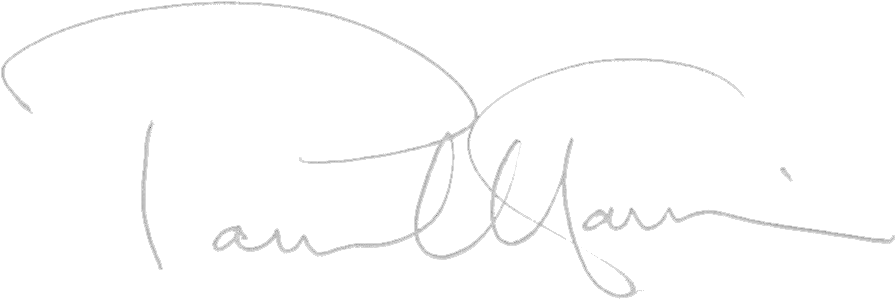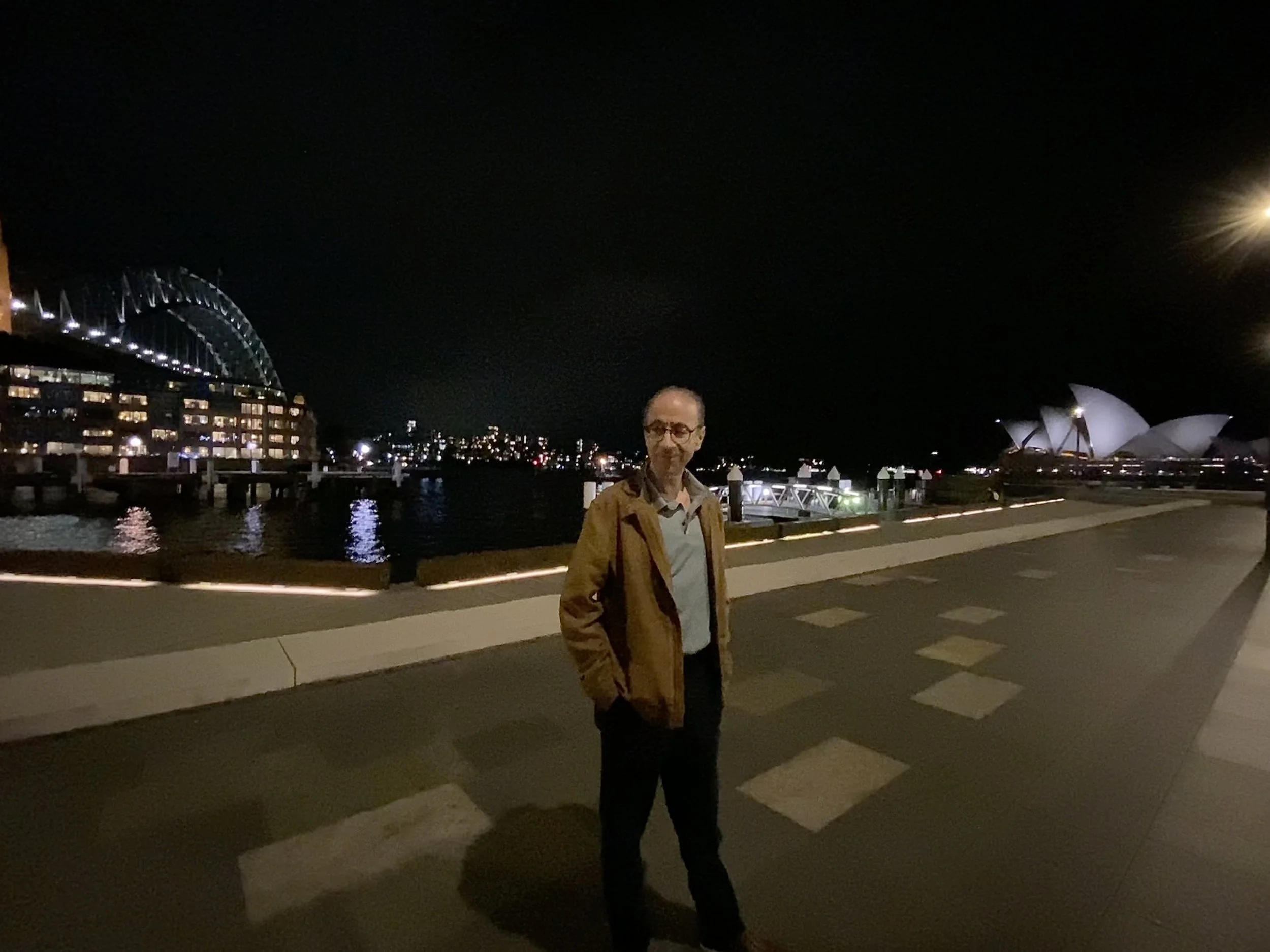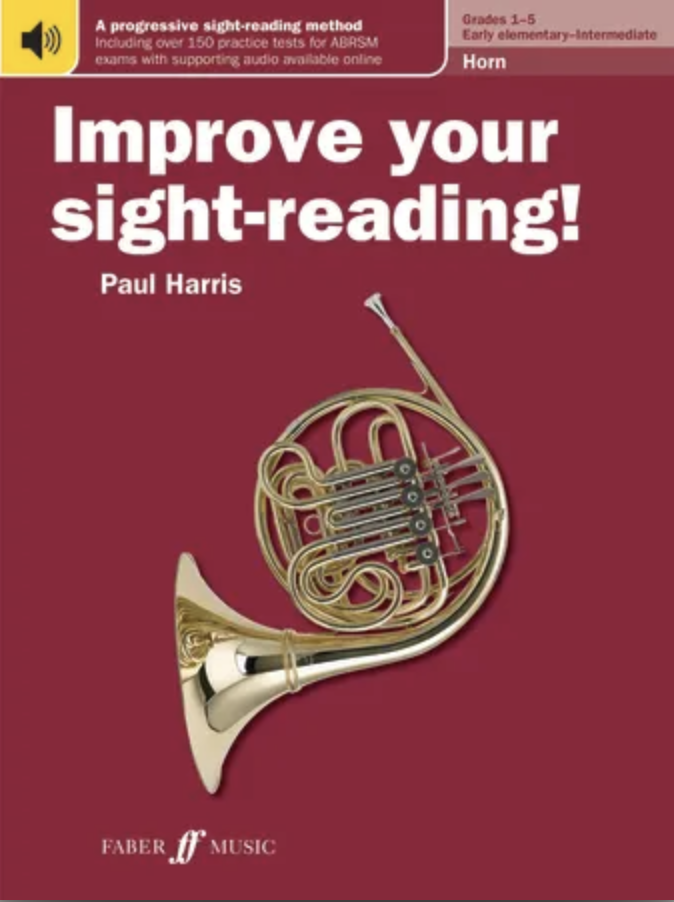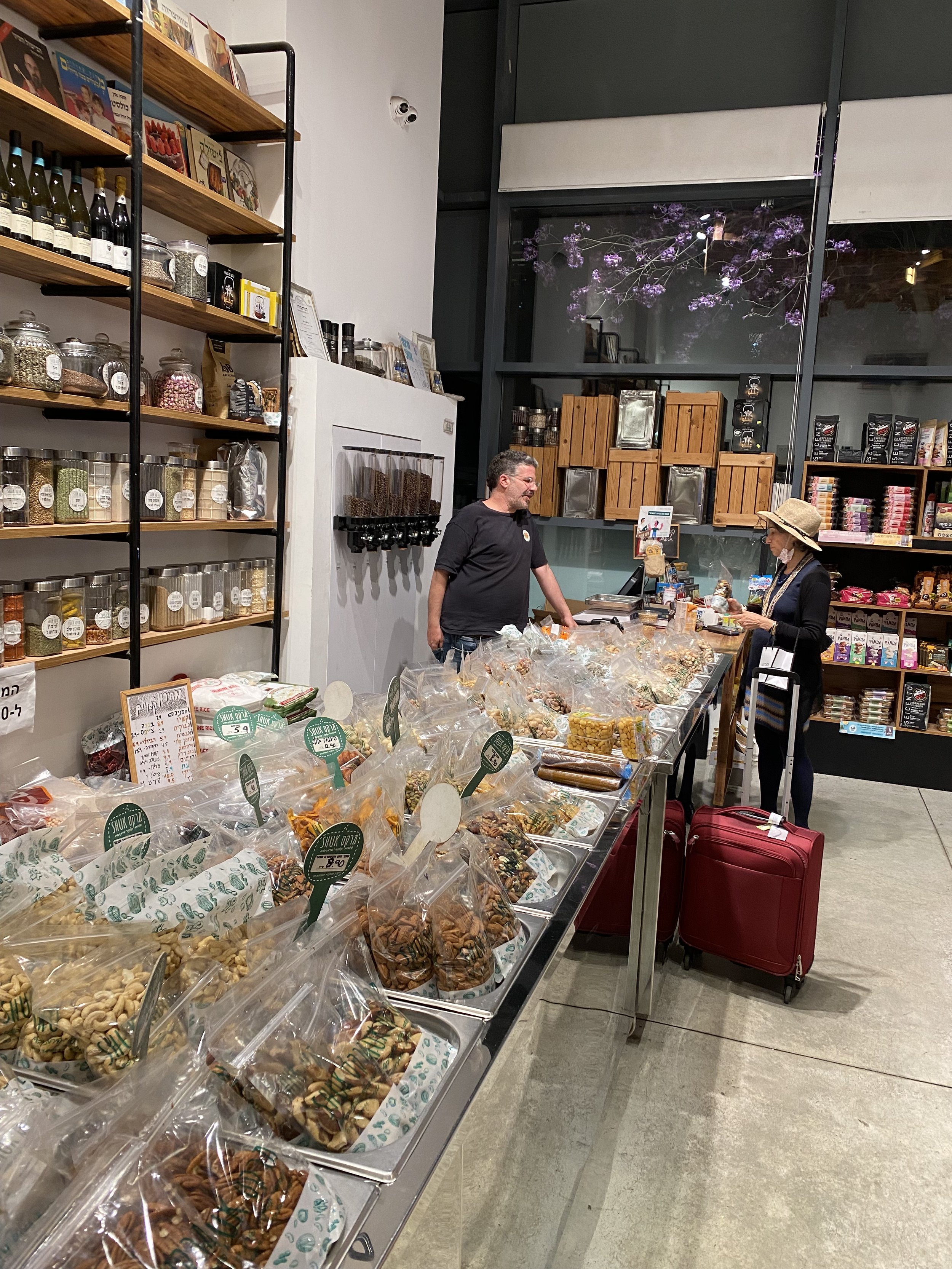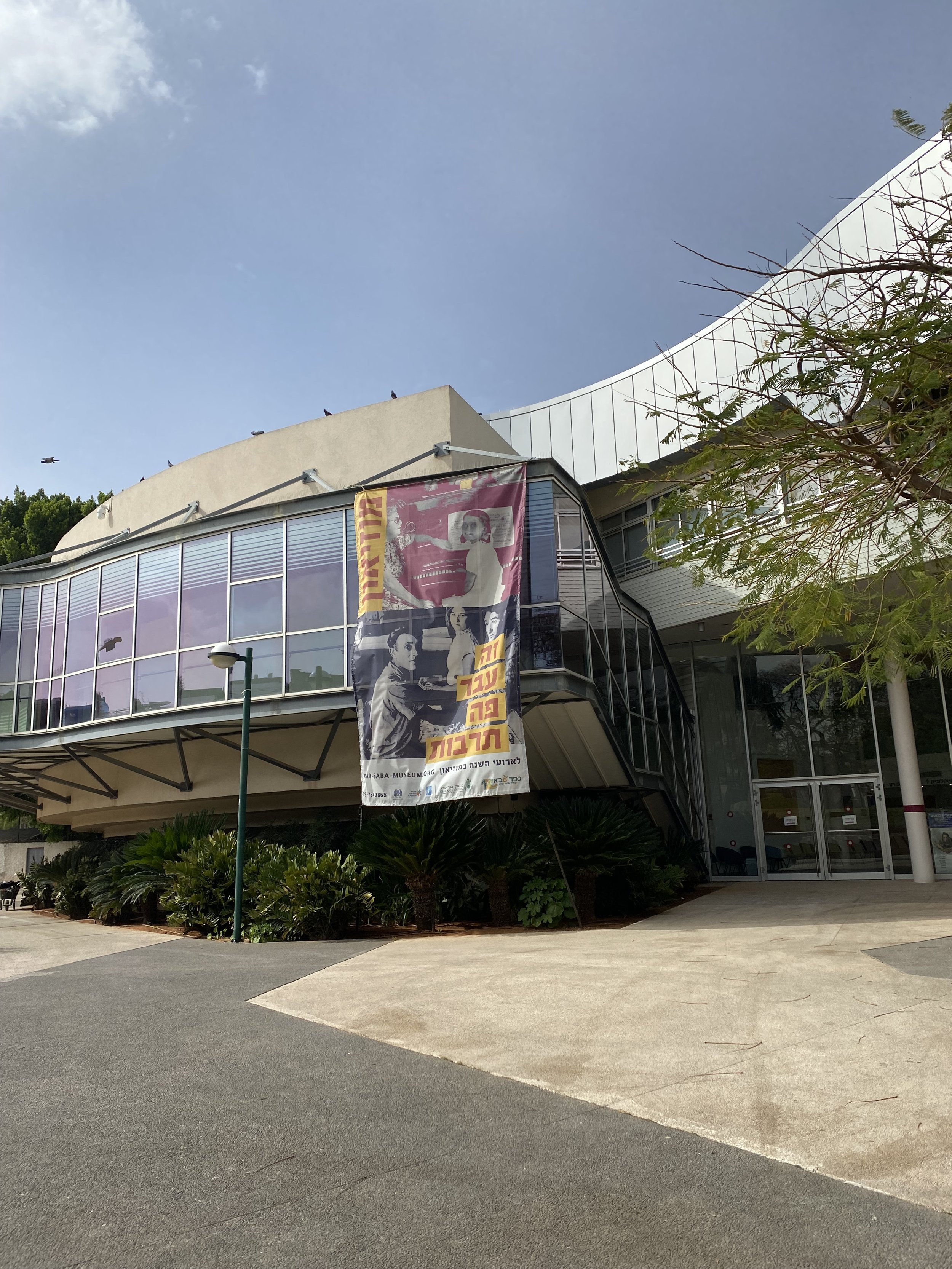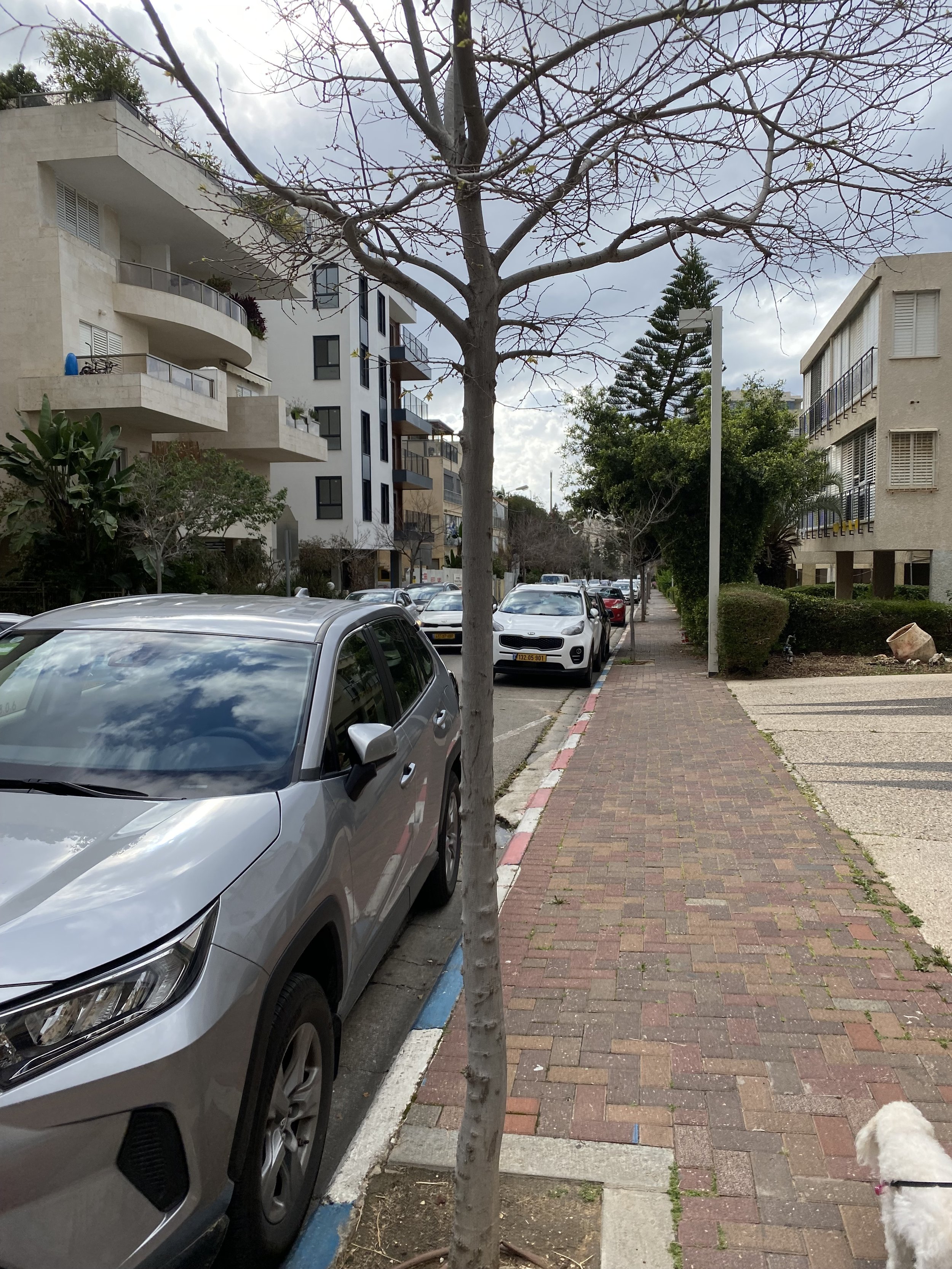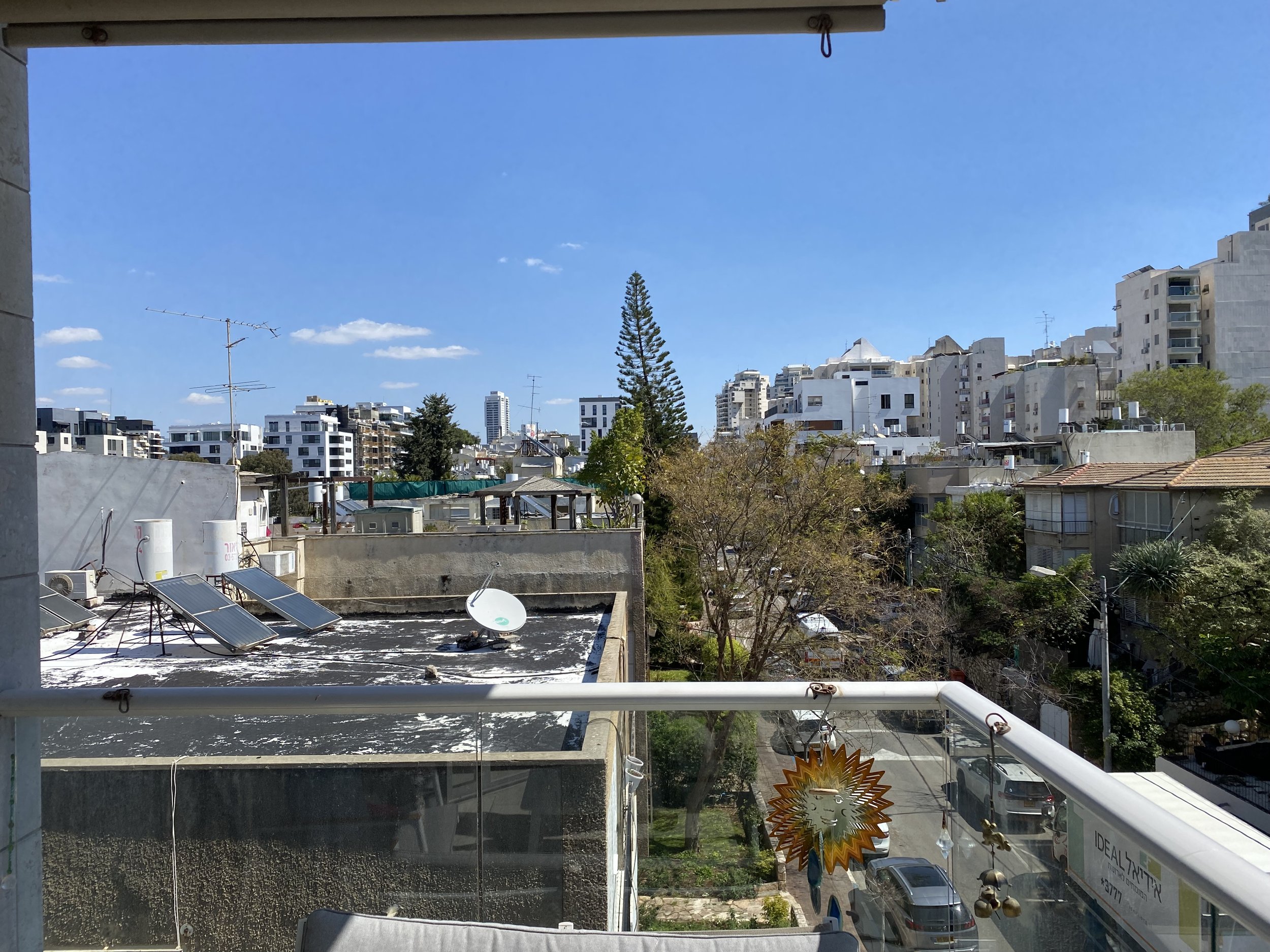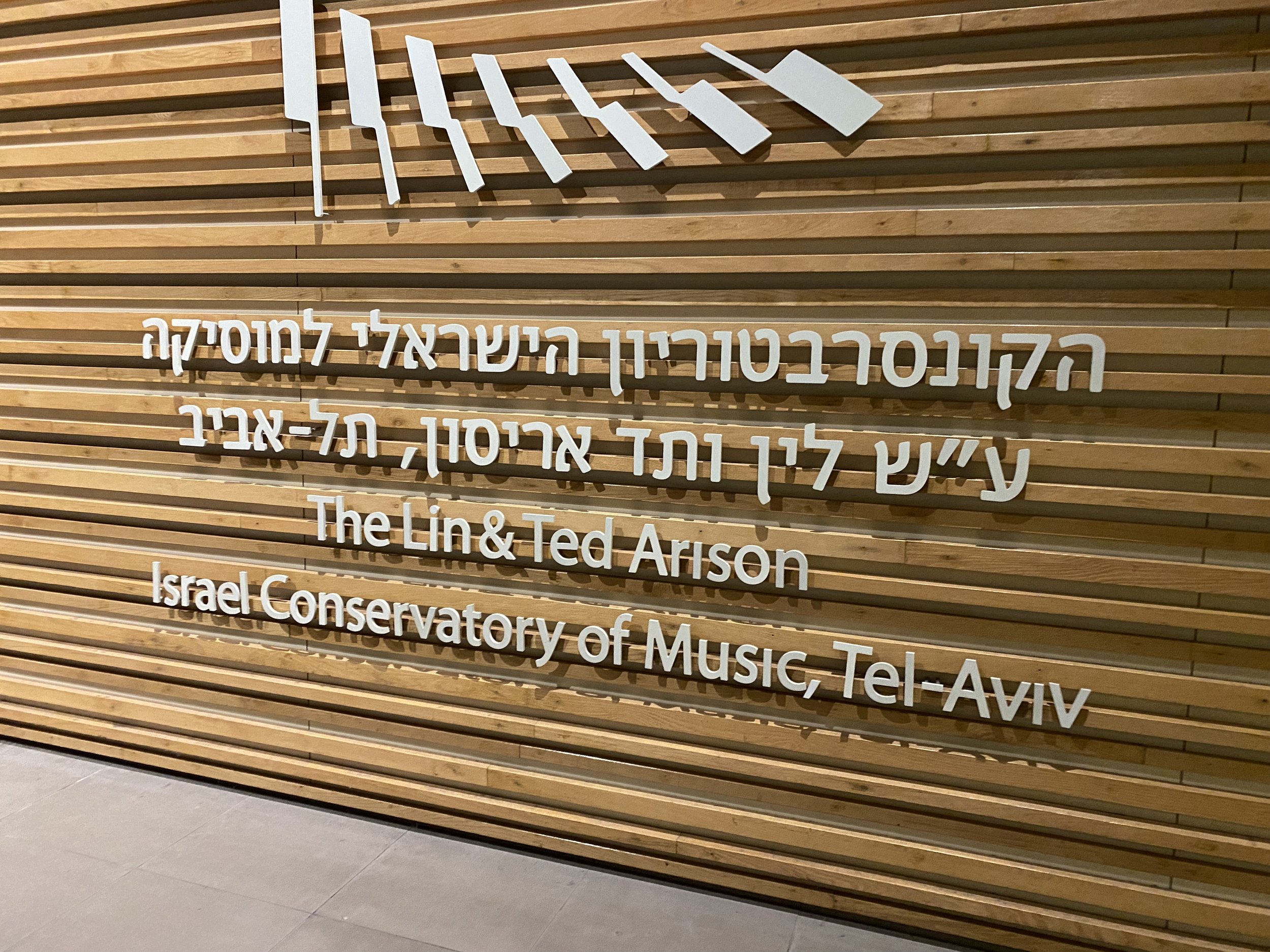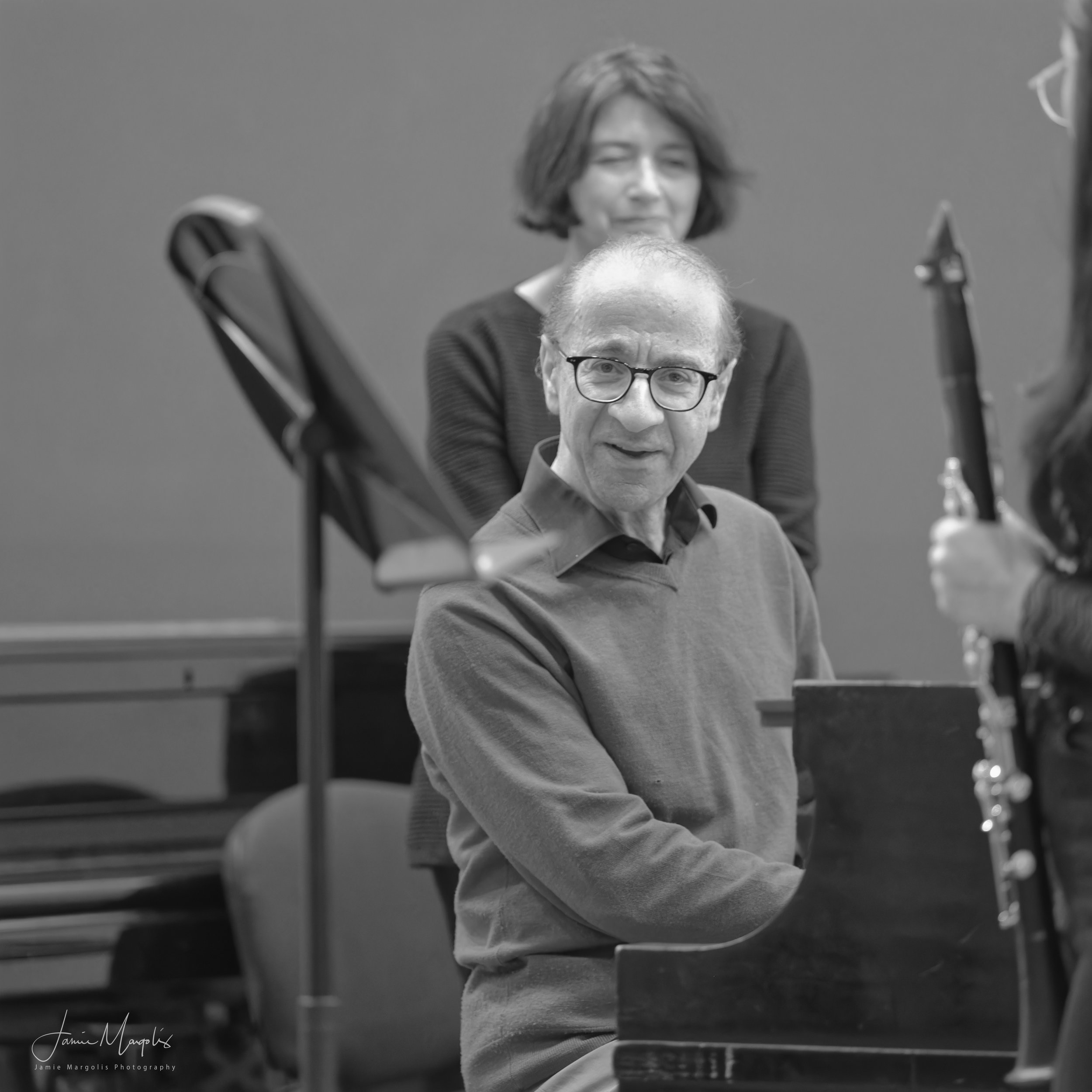If we serve up the right thing, for the right reasons and in the right order, it’s pretty likely our pupils will get it and will feel pleased. This is central to the Basics series!
An epic adventure in Oz
Teaching the technique of sight-reading – interview with Paul Harris
Improve your sight-reading! | NEW Brass editions
This series of videos launches the new Improve your sight-reading! brass editions for Trumpet, Trombone and Horn. Paul reveals his expert insights into teaching sight-reading, supported with musical examples, fun teaching ideas, tips and demonstrations.
Part 1 - Sight-reading is easy
Paul explains how anyone can learn to sight-read and why it is such a valuable skill.
Part 2 - Using the book
Paul takes a deep dive into the different exercises that make up the workbooks, exploring how each can be used to improve teaching and practise.
Part 3 - Games
Paul explores four fun games that can be used to improve sight-reading skills.
Part 4 - Having a go!
Paul and student Astrid walk through and perform live demonstrations of each exercise, indicative of how the book might be used in a lesson setting.
Improve your sight-reading! for Trumpet, Horn and Trombone are available now!
An amazing trip to Israel
It all began many months ago when I received an invitation from the wonderful Eva Wassermann – clarinettist extraordinaire – to spend a week in Israel giving masterclasses.
Eva Wasserman
On Monday we had the first class at the Kfar Saba Conservatory and I heard some terrific young players in both familiar and unfamiliar repertoire. The first performer brought a Fantasia by Sarah Feigin – a brilliant piece by this Russian-born composer who has spent all her life in Israel. I’ve brought a copy back and intend to play it at the next available opportunity! We had lovely performances of Nielsen, Krommer, Knezek (a concerto I didn’t know) and much more besides. The day ended with a lovely performance, by a young group, of my Clarinetwise – the conductor was Nurit Blum who taught many of these excellent players. I also saw my first lemon and kumquat trees plus much sumptuous looking fruit in shops. And met the charismatic Ron in his nut shop!
Left: Ron’s nut shop
Right: Kfar Saba Conservatory
From the English snow, I walked into a warm and sunny Summer – most of the time anyway. But Tuesday was somewhat different. We awoke to a ranging storm – of biblical proportions! Our first port of call was to the venue where the Jerusalem Symphony Orchestra rehearse. They are a top orchestra and, maybe the most exciting part of the trip, 5 members were going to give the world premiere of my Clarinet Quintet. They had a break from orchestral rehearsals and had some time to rehearse my piece – I was invited to attend. Danny Erdman, himself a pupil of Eva’s, principal of the JSO was taking on the work. It was an awesome experience for me.
Left: Jerusalem Symphony Orchestra in rehearsal
Right: Danny and the quintet
On the way from the JSO’s HQ to the Givatayim Conservatory, Eva and I were waiting at a bus stop. The road was a river (and a deep one at that) when a somewhat inconsiderate driver came past at a very aggressive speed drenching us all totally! Eva rang her husband who happily was able to bring us a change of clothing which he dropped off at the conservatory. More splendid young players, and again some unfamiliar music - Dreseke and Baklanova for example. But also many old favourites, Saint-Saëns, Hoffmeister and Nielsen among them.
I didn’t start until late on Wednesday, so we were able to go for a walk – there was very little time overall for sight-seeing generally. But it was good to get a local feel – it’s all very hustle and bustle and there’s a feeling of high energy wherever you are in Israel. In the afternoon we made our way to the Israeli Conservatory of Music in Tel Aviv. Milhaud, Mozart, Gade, and Weber featured and the standard was very accomplished.
Thursday was the really big day. Jamie, Eva’s husband drove us to Jerusalem. There is some tension in Israel at the moment and there was supposed to be a protest in Jerusalem today. These protests can attract over a quarter of a million folk. Luckily today’s demonstration was postponed. It would have made the whole experience very uncertain. So we arrived at the Jerusalem Academy of Music in glorious sunshine and warmth. The players in the afternoon were of a very high standard indeed and we worked on Brahms, Mozart, Muczynski and more. Also, a couple of small clarinet ensembles for the evening concert – which was great fun.
The evening concert itself included a number of the young players with their ensembles and then Danny and Ido Azrad played a little duet, Celebration, which I wrote especially for the occasion.
Then the Quintet. It was a very special performance. I don’t write too much music that is particularly complex and extended in length – and makes a serious statement about the world in which we live. But this piece does. It’s subtitled The Nine Muses and each section considers each of the Greek gods who gave artists, philosophers and individuals the necessary inspiration for their creation. The work tries to affirm the ultimate goodness of art and how it underpins humanity. A thought we need to remember now – almost more than any other time in our history.
The 5 members of the JSO, Clarinet, Danny Erdman; violins, Jenny Hünigen and Yuliya Sigalovskaya; viola, Itamar Ringel and cello, Talia Erdal gave it a spectacular performance.
It brought a truly amazing week in Israel to a truly amazing conclusion.
Flexi Violin – enjoyable and rewarding repertoire with added versatility!
I don’t often mention my violin playing – but I did in fact get up to (and passed) Grade 8 at school! And I once played the Mozart Clarinet Quintet (in public) with all of us playing our second instrument (in my case my third!). So, when Faber Music suggested working with the wonderful Jessica O’Leary on a book of violin repertoire I naturally jumped at the chance.
What emerged has a rather particular, and we hope, very useful and unique appeal. It’s a book that solves a problem (a number of problems in fact!). Each piece can be played in three different ways (hence Flexi Violin): violin and piano, or as a violin duet, or by the two violins with piano. And each combination provides a complete and satisfying musical experience. The duet part could be played by the teacher or another student. Though the technical requirements of the second part are sometimes a little more demanding (to ensure a complete musical experience) often students of approximately similar levels would be able to have a good crack at it.
In choosing the repertoire, we set ourselves the challenge to fill the books with a wide range of really interesting, novel and appealing music that we hope will grab the imagination of both teachers and students. Flexi Violin also offers experience in playing in all the appropriate keys and introduces most of the musical 'ingredients' students need to know and manage at these levels.
So, many happy hours were spent trawling through the vast range of music available, as well as more traditional repertoire. Once chosen we set about arranging the pieces so that they could be played in these three varying ways, and also in a systematic and logical order taking players from the standard required for early elementary to intermediate level (Initial to Grade 5).
Of the pieces in Book 1, one of the most intriguing is Duetto by Schubert. During our research, we came across the crossed-out manuscript below and, as far as we can ascertain, this is this piece’s first publication!
Both Jessica and I have also contributed a piece to the book. Jessica’s characterful Witches’ Waltz gives players the opportunity to enjoy some fun tremolando. I have provided Isabel’s Piece, written, not surprisingly, for Isabel, a young violinist, a little while ago, to play at a local music festival. She just wanted a nice expressive tune!
Book 2 offers a rich variety of styles, from Vivaldi and Haydn to Irish reels. During our explorations we came across a lot of music by Cecile Chaminade, which nearly was impossible to whittle down, so there are actually three of her works included: an Air de Ballet, Slavic March, and a Gavotte – all three highly engaging, which we hope will go down well and prove useful additions to the repertoire.
The book culminates with a lively arrangement of Handel’s Sonata No 4. There is something so refreshing and energising about baroque music – it seemed the perfect piece to bring these two new collections to a rousing conclusion.
A Spotlight on my 5 Buckingham Concertos
It’s quite a few years since I wrote my 5 Buckingham Concertos (was planning 6 of course! but so far have only managed the first 40 or so bars - it’s for violin and cello so will finish it someday when I have the time).
The idea of young players performing concertos is unquestionably very attractive - a real experience for more advanced school instrumentalists. There are of course a number of appropriate works available, but often the problems begin to emerge in the orchestral parts. So I decided to produce a series of accessible concertos for two or more soloists (of about Grade 8 standard) and school orchestra. To make them as useful as possible I have employed an orchestra of strings (around the Grade 6/7 standard although the writing is always very straightforward) with additional instruments to provide colour as necessary. Having taken the lead from Vivaldi, I decided to write the first Buckingham Concerto for two oboes and two clarinets with strings and harpsichord (where the ‘Clavinova’ or other electronic harpsichord - an ‘asset’ most schools seem to possess these days - really comes into its own!)
They can all be heard below!
Buckingham Concerto No. 1 Two Oboes and Two Clarinets + Strings and Harpsichord
Buckingham Concerto No. 2 Two Trumpets + Strings and Side Drum
Buckingham Concerto No. 3 Flute and Clarinet + Strings, Cymbal and Side Drum
Buckingham Concerto No. 4 Two Flutes + Strings
Buckingham Concerto No. 5 Piano Duo (4-hands) + Strings, Vibraphone, Timpani, Side Drum and Cymbal
Although these concertos have been written with young players in mind, after a very well-received performance of Buckingham Concerto No. 1 at the Oxford Festival a few years ago. I was delighted to find that professional players and ensembles also find them equally rewarding. Here’s a splendid performance of No. 5 from a Malcolm Arnold Festival a few years ago.
All are available to buy from Faber Music
Unconditional Teaching - Further Thoughts
It’s a little over a year since Unconditional Teaching was published and I’m really touched by the impact it’s had so far. There’s no disputing that we live in uncertain times and the need for more unconditional thinking seems to be paramount if we’re to continue moving forward – especially in education. And even more so in music education.
Of course, there are many conditions which are essential in life. Conditions which protect or allow things to happen for example.
And conditions play a huge part in shaping us as human beings. Inevitably, we are very conditional in our behavior. Whether or not we’re aware of it, deep down our decisions are almost always based on our deeply held (and often deeply hidden) beliefs and values… and fears too. These instincts – these conditions – shape most of what we do; and they shape who we are. It’s so often a case of ‘I’ll do this if…’
In Unconditional Teaching I outline many of these conditions. Some are fairly obvious; others may be buried deep in our subconsciousness. Some are important, others less so. Some are necessary, but many might end up blocking the flow of effective teaching and learning.
It might go something like this: I’m happy, would prefer it, and will invest more effort into my teaching, if…
· I’m teaching in a nice room
· My pupils practise
· My pupils try hard
· My pupils rise to my expectations
· My pupils bring their books and music with them
· My pupil is interested
· My pupil is respectful
· My pupil is learning
· My pupil is musical
… and there are many more! Unconditional Teaching explores each of these conditions in detail and shows how they might indeed block the flow of teaching and learning, and then how we can either eliminate them, or, at least, manage them.
Since writing the book I have been asked many times to speak on the subject at conferences, workshops and other events. The reactions and responses have always been very thoughtful and very positive. Also, since writing, and having done many of these sessions, new conditions have become apparent.
One of the most interesting is the condition of potential. I’ll teach pupils as long as they show potential. Otherwise, isn’t it a waste of my time?
The list of eminent folk who either showed little potential as youngsters or were late (sometimes very late) developers is surprisingly long! Picasso and van Gogh were considered ‘slow’ as children; Brahms was a late developer, Janáček didn’t receive much serious recognition until he was in his 60s. Agatha Christie was weak at both handwriting and spelling at school. What a poorer place the world would be if her English teacher had told her that she really wasn’t cut out for writing!
What do we understand by potential? And how much a part might it play in our thoughts regarding our pupils? What would a pupil have to demonstrate to cause us to think this one has potential?
The problem is there are no clear answers to these questions. But if we’ve decided a pupil does lack potential, do they stand much of a chance? Minds develop at wildly different speeds. Brains process at wildly different speeds. And people change. If a pupil comes to a lesson and wants to be there, wants to have a go, it’s very important that we don’t play the potential card. We teach for the moment – not for the future.
The Virtuoso Teacher is able to create as many steps as it requires to get from each A to each B – indeed each of those steps is a mini A to B in itself. So, in the best traditions of Simultaneous Leaning, there is always progress taking place. Existential potential (whatever that is) is not a factor. As top teachers we create potential. We develop it and nurture it. Why not think that all our pupils have potential? Potential can come in a great many shapes and sizes. As long as we don’t have a cut and dried concept of what ‘potential’ looks like, then everyone can have it. And everyone can make progress.
I wonder if more conditions are becoming apparent in your mind? They are certainly coming into mine as I continue to try to think more unconditionally, and I shall write about another new idea in my next blog.
The Clarinet - Dynasties, Repertoire and The Clarinet
Welcome to this seventh and final blog considering the content of my new book, The Clarinet. The aim of the book is to present a really thorough discussion of all aspects of clarinet playing, to explain what really happens as we play (much of that scientifically) and how we can learn to develop real control of this wonderful instrument and its music.
In this article we’ll be looking at the instrument itself and some other rather interesting and helpful information I’ve gathered together.
As players and teachers, do we really need to know much about the instrument and its various parts? You can drive many miles in a car, for example, without knowing much about how the engine works! My wonderful teacher, John Davies, frequently told his pupils: ‘simply select the best reed you can find in the box and then do your best’. But over the years I have found that developing some knowledge in this area is quite possible and certainly can be very useful.
There’s a lot we can do to make a poor reed playable and a good reed better – and there is much to consider in the choosing, maintenance and general management of reeds. Wooden reeds are quite expensive and we really do need to know how to get the best out of them, and how they compare with synthetic reeds. There are many fascinating little tricks we can learn to make the whole world of reeds a lot less stressful!
We can also learn about the mouthpiece and its rather intriguing history. I’ve tried to make the whole business of facing curves, break points and many other slightly daunting aspects of mouthpieces much more approachable and thus manageable. The section on looking after the instrument was much informed by David Fingerhut and Daniel Bangham – two of the very top clarinet technicians; it covers daily, occasional and annual maintenance. The final, and maybe somewhat unexpected, section in this chapter is simply titled ‘The clarinet and orange juice’…
We then come onto some of my favourite stuff – including a short but very comprehensive historical timeline. Do you know who wrote the first clarinet sonata – and when? Or the year that reeds were first machine-made, or the very significant clarinet-related event that took place on the moon in 1969? It’s all there in the timeline!
I have compiled a very comprehensive list of repertoire timings. Each movement of virtually all the main repertoire works are given timings in minutes and seconds. When selecting works for recitals, auditions, concerts and exams, these timings are always a crucial factor and this list I hope will be a very useful aid in making these decisions. Of course, interpretation will play a part, but in compiling this list we have taken an average from at least three different performances.
Finally, maybe one of my favourite explorations–clarinet dynasties. Who was your teacher’s teacher? And their teacher… and their teacher… and so on… I had some lessons with Georgina Dobrée – whose dynasty can be traced right back to Lefèvre and Josef Beer. And through John Davies, I’m only three handshakes away from Henry Lazarus!
Here’s the dynasty for Stanley Drucker– for 61 years a member of the New York Philharmonic – what a dynasty he has!
I hope that you have enjoyed this blog series. To learn more, buy a copy of The Clarinet here: https://www.fabermusic.com/shop/paul-harris-the-clarinet-p439043
The Clarinet - Performance and Repertoire
Welcome to this sixth blog considering the content of my new book, The Clarinet. The aim of the book is to present a really thorough discussion of all aspects of clarinet playing, to explain what really happens as we play (much of that scientifically) and how we can learn to develop real control of this wonderful instrument and its music.
In this article we’ll be looking at Performance and Repertoire. Of course, the whole point of developing our ability to play the instrument is to allow us to enjoy the wonderful experience of playing music – whether chosen from the marvelous canon of specially written works (dating right back to the early 18th century) or taking on a clarinet part from the enormous and glorious repertoire of ensemble, chamber and orchestral music. And we want to be able to play this music without having to devote any brain space to operating the instrument! This gives us what I call the ‘power of intention’: this is what I want to do with this music at this moment and I know instinctively that I can do it – so I do. Having said that, it’s very important to understand that this process can happen at any level with the right kind of preparation and practice.
It’s useful first to address what it means to play with a sense of musical style. Each musical-historical period is considered with many practical ideas – how playing music written in each particular period can be made more authentic through control of tone, articulation, and phrasing for example. Readers are also encouraged (via some intentionally provocative thoughts!) to begin to come to their own unique decisions regarding style… would you put a jazz cadenza in a performance of the Mozart Concerto?!
Thinking about how we develop our own interpretation of the music we play is also important. Maybe the most fascinating part of being a musician. It’s all about emphasis and subtle punctuation – listen to people speak; how do they convey the particular meaning of the words they use? Listen to actors deliver their lines. In speech we have added variables that we can’t put to quite the same use in music – rhythm and speed of delivery for example. We can only employ these in rather more delicate and restrained ways. But considering all these devices we begin to give our meaning to the music we play.
Here's an example. I’m fascinated by the significance of upbeats, and how we can use them to give energy, motion and direction to our phrasing – and, more broadly, our whole performances. I describe the connections between the physical act of walking and the significance, impact and consequence of up- and down- beats. Which notes, or indeed parts of a note, form the all-important upbeat moving our phasing onwards (and upbeats certainly don’t have to come at the end of a bar). Which bars can become upbeat bars? And as we delve deeper, we find we can simultaneously have a number of ideas working together to create what I call Quantum Phrasing. I hope you’ll become equally intrigued! Take the example below from the first movement of Brahms’ Sonata Op 120, No 2; the F after the third beat can be played both as a resolution of the appoggiatura and as part of the upbeat to the next bar:
There are also more practical considerations discussed in this chapter– the best and worst! – foods and drinks to have before a performance; how best to warm up if there’s limited time; how to overcome a dry mouth or tight throat – and a lot more besides!
To learn more, buy a copy of The Clarinet here: https://www.fabermusic.com/shop/paul-harris-the-clarinet-p439043
